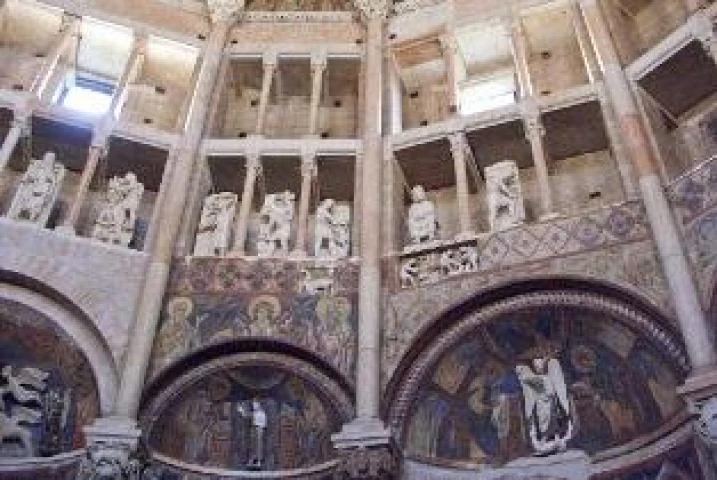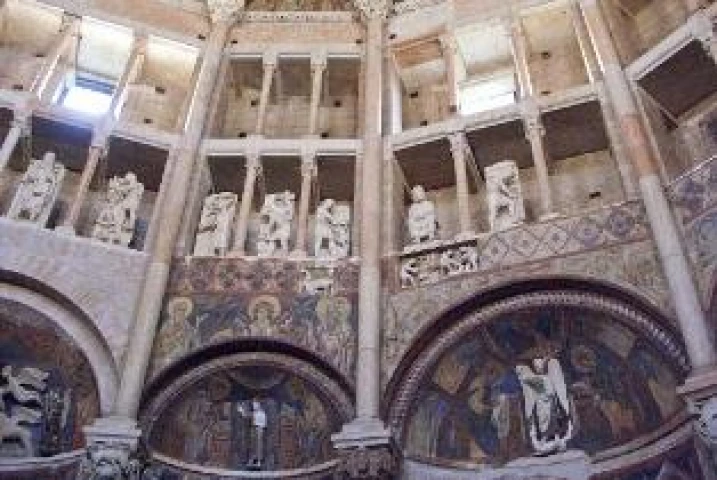WTI Magazine #17 2014 Feb, 14
Author : Enrico De Iulis Translation by: Alessandra Bitetti
If there is a dark zone, or something that is little known of the Italian Art, this is surely the late Romanesque period and the beginning of the Gothic one. In that portion of the history of art, especially with regard to the sculpture, after Wiligelmus the greatest personality of Romanesque sculpture in northern Italy is Benedetto Antelami.
Little is known about his life: we know that in 1178 he was working in the Cathedral of Parma. Here, in addition to the knowledge of the Provencal sculpture, he showed both classical and Byzantine elements of his refined culture. This bas relief was part of a pulpit: some plates from that pulpit have been recently recovered inside the floor of the church. It represents the "Deposition from the cross" and it has Byzantine traits in its solemn symmetry composition that is unrolled in a precious metallic notch framing. Here, the dense front of the characters thins in the middle to lead against the bottom the painful figure of the Christ that is warmly welcomed by Nicodemo's striving arms.
Later, in 1196, Antelami was working with the sculptural decoration of the Baptistery of Parma, a building of which he was probably also the architect. As a whole, it constitutes an organic cycle which takes inspiration from the events and the destiny of the man in relation with the holy mysteries of the Christian religion, and in the light of the harmony between the Ancient and the New Testament. The external lunettes of the three gates show the Worship of the Three Kings, the Last Judgment (it's the first time that this subject – so frequent in the Cathedral of the Countries beyond the Alps – is represented in the Italian sculpture), and a parable based on a known Oriental legend of Barlaam. These figures match with those in the interior lunettes: the Flight into Egypt, the Presentation at the Temple and David playing the harp. All around the outside of the building there is a band of carved panels depicting fantastic animals derived from medieval 'Beasts', Vices and opposed Virtues, and above, within niches opening in blind arches, there are the statues of the prophets David and Ezekiel and the Encounter of Solomon with the Queen of Sheba, that are considered Antelami's masterpieces because of the relation between their solid en bloc structure and the vibrant linear sensitivity in the drapery process.
The high reliefs have a powerful plastic prominence and they are realized with a keen sense of reality. They are the personifications of the Months that originally were located between the columns of the first gallery: they were connected with the Seasons including Spring, that - despite some hard carving – has to be probably considered an autograph due to the elegance which close in from the bottom. According to recent studies, all these sculptures would have been designed for a great gate for the facade of the Duomo, a project that was stopped after Antelami's death, around 1210.
Benedetto Antelami is an important figure in the history of Italian art: it has a Provencal education, due to the close link between Liguria, his native land, and the south of France where he got all the new fashions of the architectural decoration of that moment. It also combines the Lonogobard tradition of the northern Italy with a new interpretation of the classic Byzantine style, up to to revive - with great skill – the all-round sculpture, by separating the figures from the bottom and proposing an early balance of anatomical shapes in an almost classical style. He is also considered the point of reference from which the pre-Renaissance sculpture would restart in Italy: a current that would later have inspired Donatello, Lorenzo Ghiberti and Michelozzo.








